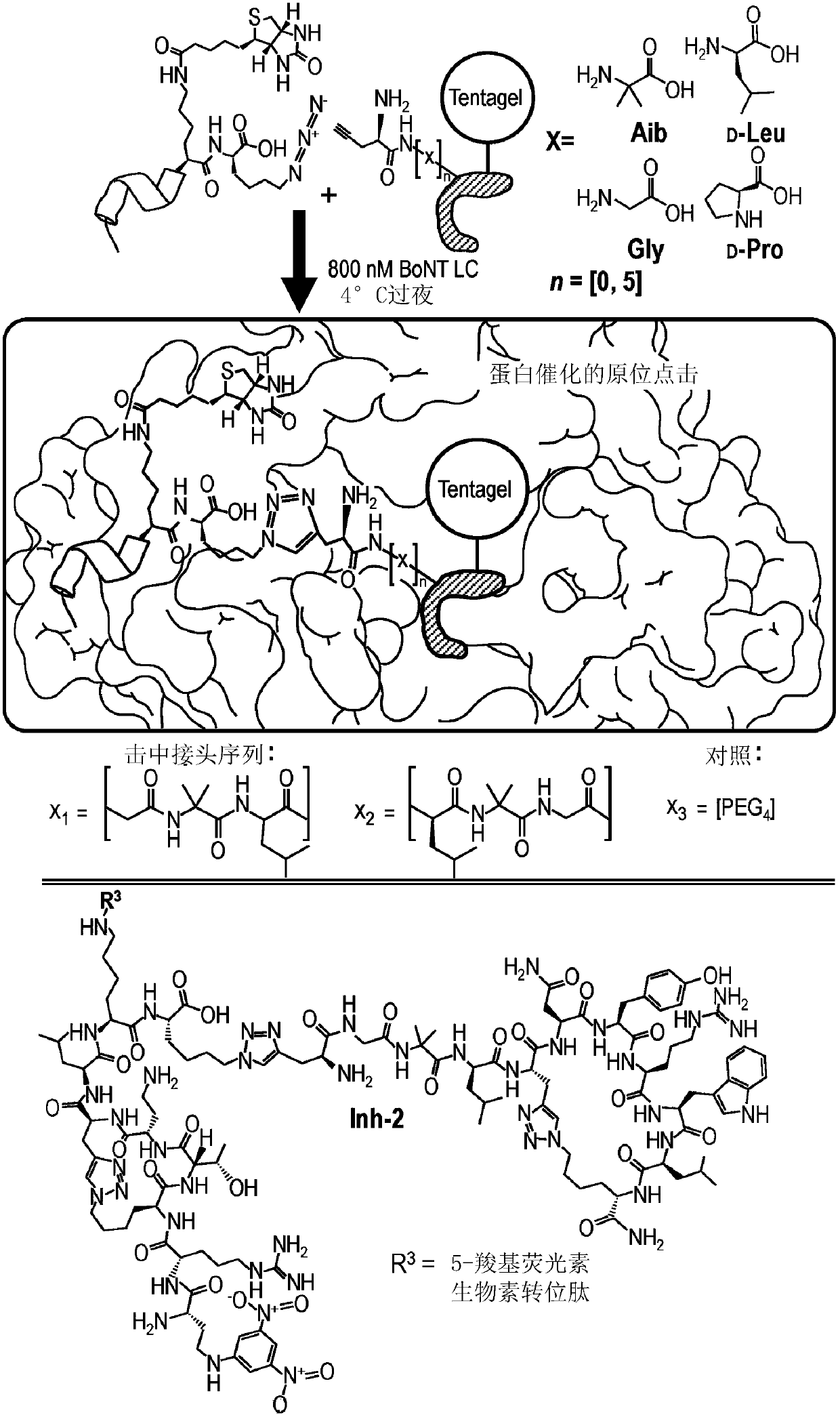Botulinum neurotoxin-specific capture agents, compositions, and methods of using and making
A technology of botulinum neurotoxin and capture agent, applied in the direction of isotope introduction into organic compounds, organic chemistry methods, chemical instruments and methods, etc., can solve the problem that molecular inhibitors cannot enter
- Summary
- Abstract
- Description
- Claims
- Application Information
AI Technical Summary
Problems solved by technology
Method used
Image
Examples
Embodiment 1
[0228] Example 1. Screening strategy for botulinum neurotoxin-specific ligands.
[0229] A macrocyclic peptide ligand (Inh-1, Figure 6 and 7 ). Inh-1 with a binding affinity of about 70 nM (k D ) and similar inhibition constants bind to the active site. Using a fully synthetic in situ click epitope targeting approach (e.g. figure 1 shown), used to identify a second peptide macrocycle (L2, Figure 8 and 9 ). L2 exhibits a k of about 80nM D , but no inhibitory effect. Finally, in situ click screening facilitated by BoNT LC was employed to identify linear peptides linking two macrocycles (e.g. figure 2shown). The final bivalent ligand (Inh-2, Figure 10 ) inhibits BoNT LC with an IC50 of 165±15 pM. Inh-2 is also carried into neuronal cells by BoNT itself and inhibits holotoxin in living cells. This technology offers a potentially general approach for the development of peripheral and active-site binders from initial libraries for combinatorial use through in sit...
PUM
 Login to View More
Login to View More Abstract
Description
Claims
Application Information
 Login to View More
Login to View More - R&D
- Intellectual Property
- Life Sciences
- Materials
- Tech Scout
- Unparalleled Data Quality
- Higher Quality Content
- 60% Fewer Hallucinations
Browse by: Latest US Patents, China's latest patents, Technical Efficacy Thesaurus, Application Domain, Technology Topic, Popular Technical Reports.
© 2025 PatSnap. All rights reserved.Legal|Privacy policy|Modern Slavery Act Transparency Statement|Sitemap|About US| Contact US: help@patsnap.com



